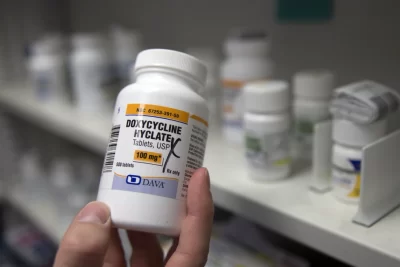
ALBION, Pa. — “You are the Lighthouse in someone’s storm,” reads the message above a mural of a sailboat bobbing on ocean waves under a cloud-studded azure sky. It’s an unexpected slogan for a prison wall.
On a nearby door painted deep blue, a bright yellow Minion character offers “Ways to say hello,” lists of suggestions about how prisoners incarcerated in a segregated unit of Pennsylvania’s State Correctional Institution at Albion can best greet each other. A handful of “sensory” rooms in the unit offer calming blue walls where harsh fluorescent lighting is dimmed by special covers.
The unique environment is part of a program aimed at providing better serving prisoners with intellectual or developmental disabilities, a growing population that has presented a challenge for corrections officials as they try to balance the need for security with accommodations, according to experts.
Such prisoners often struggle with overstimulation, inflexibility and trouble with complex directions, resulting in strong reactions that can lead to further discipline. They also grapple with social boundaries, making them more vulnerable to abuse, violence or manipulation in prison, said Steven Soliwoda, creator of Albion’s Neurodevelopmental Residential Treatment Unit.
In a regular prison setting, many of these prisoners with autism and similar disabilities “would normally have kind of gotten through their incarceration just quietly,” said Soliwoda, who is also program manager at Albion. “Maybe they would have been a recluse or spent a lot of time in their cell. But their voices are heard in the program and they develop that independence and the social skills they need to survive when they get out of here.”
There is no comprehensive count of how many prisoners in the U.S. have autism or intellectual disabilities, though some studies estimate more than 4% are autistic and almost 25% reported having cognitive impairments, according to the U.S. Bureau of Justice Statistics — nearly twice the rate of each in the overall population. Many advocates believe the number could be much higher because of underdiagnosis before prison or because of ineffectual or nonexistent screening at some corrections departments.
The Neurodevelopmental Residential Treatment Unit, located roughly 20 miles (32 kilometers) outside of Erie, Pennsylvania, was started about three years ago and is the only facility of its kind in the state. The unit houses about 45 men — a small population that helps staff focus on individual treatment and limits some of the sensory stimulation of prison, Soliwoda said.
There’s an exercise yard not accessible by the prison’s general population, and prisoners stay in the unit to receive their medication and see specialized treatment staff. They can check out puzzles, yoga mats or drawing supplies to help them cope in overwhelming moments. One prisoner spends hours every day juggling in the common area to help calm his mind — something that wouldn’t be allowed in most units.
“My first impression I got was, ‘Wow, this is more like a therapy and rehabilitation for criminals with all these paintings and like positive messages surrounding it,” said Christopher, a prisoner diagnosed with a form of autism.
Sean, a prisoner diagnosed with autism and intellectual disabilities, said he felt safe here. “It’s not like the general population where I would be more prone to being bullied and stuff like that,” he said. “You get to learn about how to cope and how to recognize your emotions.”
Soliwoda said he hopes to bring more programming to the unit as it continues to evolve. For now, though, corrections department officials don’t have plans to expand the model to other prisons. Critics say that’s a mistake, that with more than 36,000 people incarcerated in Pennsylvania state prisons, there are likely many more prisoners with these disabilities.
“I don’t think there are enough accommodations provided in our jails and prisons for all kinds of disabilities,” said Leigh Anne McKingsley, senior director of Disability and Justice Initiatives at The Arc, a nonprofit organization serving people with intellectual and developmental limitations. For prisoners with these challenges, she said, “the accommodations are even less.” “Those disabilities seem to get lost,” McKingsley said.
Because prisons are often closed from public view, it’s unclear what accommodations they provide or how many have specialized units. The Arc has been working to gather that information while offering training to everyone from police to prison staff on better ways to identify and interact with prisoners with disabilities.






